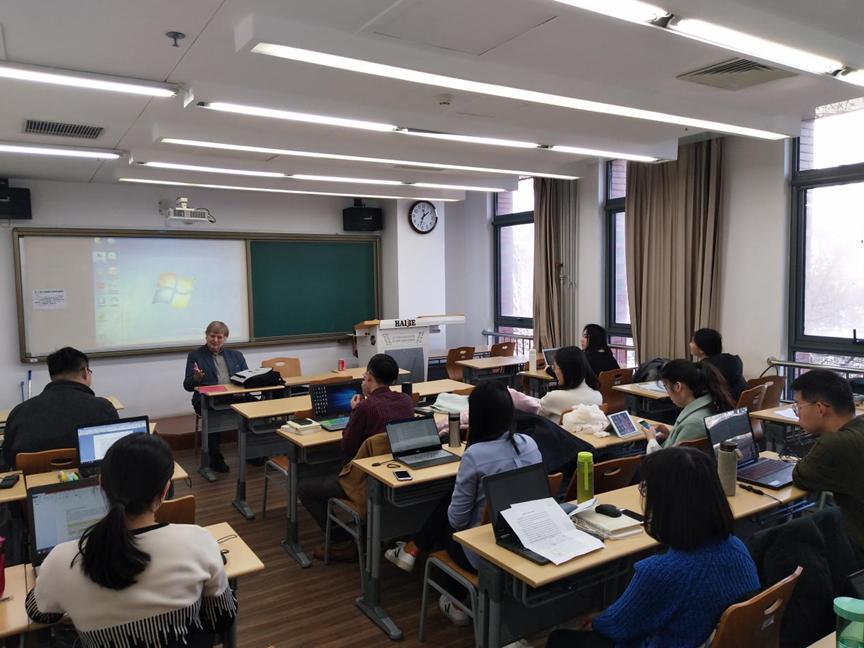From November 26th to December 4th, 2018, Professor Gudmundur Alfredsson conducted a five-day International Human Rights Law course for students. All the master students of grade 2018 participated in the study of this course.

Professor Gudmundur has been engaged in international human rights law research for many years. He has served as Chairman of the United Nations Working Committee on the Protection of Minority Rights (2006) and a member of the United Nations Subcommittee on the Promotion and Protection of Human Rights (2004-2006). He has taught international law and human rights law in more than 100 countries around the world, and has made great achievements in international human rights law and minority rights research.
The lecture consists of 5 lessons, including the UN's human rights mechanisms, minority rights and national human rights practices. In the first class, Professor Gudmundur introduced the basic knowledge of international human rights law, such as the classification and main features of human rights, and gave a detailed introduction to the sources of international human rights law, UN human rights institutions and other organizations involved in human rights work. He mentioned that non-governmental organizations, who play an important role in the international arena, have the right to express their opinions and a large part of the information that the United Nations masters comes from non-governmental organizations. The second lesson focused on the contents of the core international human rights treaties such as the International Covenant on Economic, Social and Cultural Rights and the International Covenant on Civil and Political Rights. Professor Gudmundur suggested that students read the legal instruments carefully and grasp the meaning of provisions precisely. When it came to the issue of the death penalty, Professor Gudmundur’s questions had sparked students’ thoughts on whether the death penalty should be abolished and the reasons for abolishing the death penalty. In addition, Professor Gudmundur explained the relationship between the principle of non-discrimination and special measures and introduced the rights of minorities and their role in maintaining peace and preventing racial and religious conflicts. Professor Gudmundur also summed up the characteristics of the minority for students and stressed that the definition of minority still needs to meet the standards of living in the local for more than three generations. As long as the international standards are met, it constitutes the minority in international law, not depending on the recognition of the country in which they are located. In the third lesson, Professor Gudmundur gave a comprehensive introduction to the functions of United Nations agencies, national human rights institutions that monitor the human rights situation in various countries and introduced the human rights obligations of the State based on the Charter mechanism and the treaty mechanism. For example, the country needs to regularly accept the deliberations of the Human Rights Council and submit periodic reports to the treaty bodies of the treaties it has ratified. In the fourth and fifth lessons, each student gave an eight-minute speech on issues related to international human rights law. Professor Gudmundur gave a brief evaluation and summary, and answered the confusion encountered by the students in the process of studying international human rights law.
The five-day International Human Rights Law course was successfully concluded with the applause of the students. It is expected that Professor Gudmundur will come again.
Translated by Jiasheng HUANG